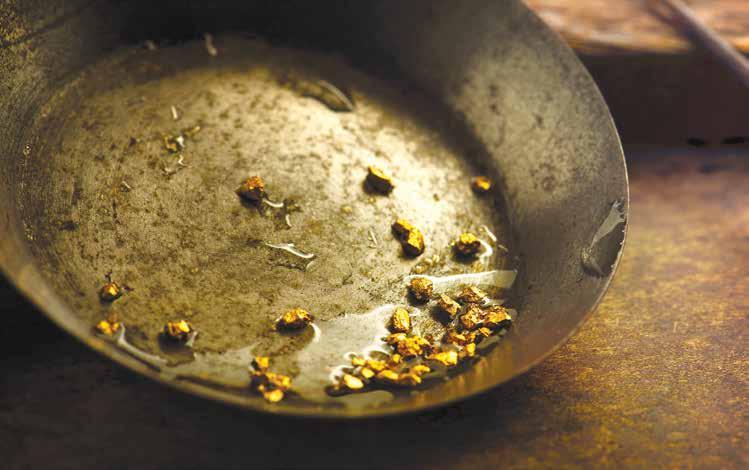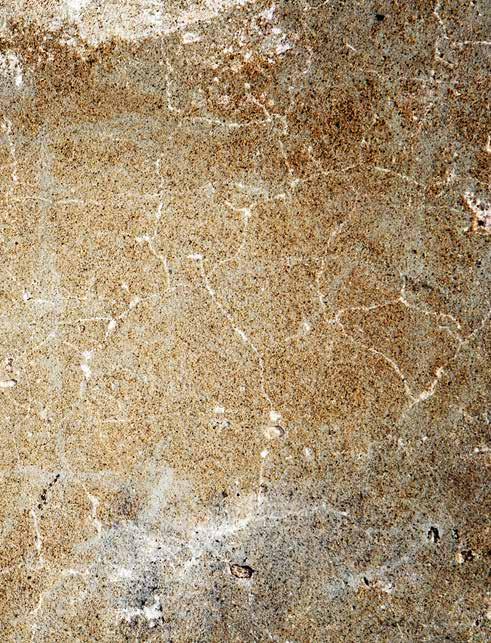
9 minute read
Al Finegan
Australia’s Coming of Age
By: AL Finegan
Advertisement
Edward Hargraves’ discovery of gold on the fields of Ophir, near Bathurst, in 1851 flagged the beginning of the most important period of Australian development. It brought unprecedented wealth, reformed the political and social structure, and fundamentally changed the trajectory and stability of the Australian economy forever. The gold rushes occurred hard on the heels of a major worldwide economic depression, resulting in about two per cent of the population of Britain and Ireland emigrating to NSW and Victoria. Also arriving were large numbers of continental Europeans, North
Americans, and Chinese.
Before 1851, NSW, Victoria, and Tasmania were essentially convict settlements despite an increasing population of free settlers. The total population in Australia was just over 400,000. NSW had about 200,000 people, and a third of them lived within a day's ride of Sydney. The rest were scattered along the coast and through the pastoral districts, from the Port Phillip District in the south to
Moreton Bay in the north. In 1836 a new colony of South Australia had been established, as a separate territory from
NSW. By 1850, convict transportation to Eastern Australia had ceased, and the government concentrated on the expansion of a rural industry, as the merino sheep numbers increased to over 16 million. Wool was the ideal agricultural product that fledgling Australian colonies could export back to England by ship without it perishing. The English class system was imbued in the colonials’ psyche. Society was clearly divided, and an individual’s place was recognizable simply by the clothes he or she wore. Soldiers were in uniform, convicts all wore their distinctive calico, duff or canvas trousers, striped cotton shirt and grey wool jacket, while public servants dressed in a suit. Male settlers wore cabbage tree hats, moleskin or duck trousers, while their women were fashion conscious, often carrying a green parasol, wearing a white linen shirt with a pleated, frilled front and a pointed collar above bell-shaped dresses, supported by crinoline petticoats. Everyone knew their place in society, and life ticked over in a controlled and disciplined manner. Then, in a flash, the ordered class society evaporated, as the citizenry went certifiably insane. The news of gold nuggets just lying around, glittering in hundreds of creeks and gullies sent a rush of people to the west in NSW, and north from Melbourne. Reports rapidly circulated of many prospectors finding gold worth a fortune, causing a frenzy of activity to get to the goldfields. Soldiers, settlers, and public servants dropped everything, sold up, and rushed to make a claim. Convicts turned out for rollcall only to find that their screws had gone. They collectively shrugged, discarded their convict clothes, and took off to the gold fields. Ships began to arrive, packed with hopeful miners. After anchoring in Sydney Harbour, or Port Phillip, not only did the prospectors bolt for the gold fields, but so did the entire crew, leaving hundreds of abandoned ships in the harbours. The authorities were in turmoil as their staff diminished while the population exploded. Over the next few years over one million individuals arrived to try their luck in Australia. Life on the goldfields was the embryo that created the one-class society we enjoy today. Anyone can call another person “mate”. On the goldfields, settlers toiled beside convicts, or a soldier worked with a public servant. Who or what they used to be was suddenly irrelevant. They all dug for gold. It was the birthplace of the term,” digger.” They were all in it together, and the only ”enemy” was the government, demanding their taxes from the diggers, often using violent means. All the colonies except WA and Qld had already gained their independence. SA remained a colony established specifically to be free of convicts. It was also free of gold, and remained a quiet, dignified society, considering itself above the rambunctious colonies to the east. Qld was declared an independent colony in 1859 and struggled until 6th October 1867 when gold was discovered in the world’s richest alluvial goldfield at Gympie,

BY: Al Finegean
kicking off one of the “wildest rushes of Queensland's history.” Meanwhile, WA carried on quietly, maintaining their convict-oriented society until 1868. It wasn’t until the 1890s before its own gold rush changed the WA society. Before 1851, large areas of the Australian inland were still unknown to Europeans. By 1860, a national demand to know exactly what the geography of inland Australia was, became the talk of the day. Many believed it was a massive inland sea, others that it was occupied by an advanced civilisation of a potentially hostile nation. As speculation grew, it began a race to find a route from southern and eastern Australia to the north, revealing just what was in the Australian interior, and hopefully, at the same time, to open vast new pastoral districts. In 1858, arriving in a 5-month-old newspaper was a story of advances in telegraphic communication, including a recently completed telegraphic line connecting England to the USA. This news stirred the race for exploration as individual colonies recognised the potential economic benefits of hosting an overland telegraph line to the north of Australia. The colonials believed that the current five-month communication delay with London condemned them to a second-class existence. Graziers, having sent their annual wool bales to Britain, would discover too late that the market now craved Indian cotton. Mining companies would send back opals and gold. A year later they received paltry cheques because diamonds were all the rage for hat pins and brooches on Regent Street. Australians had to read 5-month-old London newspapers. Some had rushed back to Britain after receiving a letter that a parent was dying, to be told when they docked, it had only been a bad cold. Authorities were suspicious of foreign ships. Could we be at war with this foreign nation? So began many explorations as European explorers made their last great, often gruelling, and sometimes tragic expeditions into the interior of Australia. Some had the official sponsorship of the colonial authorities, while others were commissioned by private investors. Trailblazers like Edmund Kennedy and the Prussian naturalist Ludwig Leichhardt had met tragic ends attempting to fill in the gaps. Explorers were ambitious for the glory and rewards lavished on discoverers of new territory with potential for agriculture or mining. Surveyors also became explorers as the colonies sent out expeditions to discover the best routes for lines of communication. The size of expeditions varied considerably from small parties of just two or three to large, well-equipped teams led by gentlemen explorers assisted by smiths, carpenters, labourers, and aboriginal guides, and utilising horses, camels, or bullocks for transport. On Monday, 20th August 1860, a Melbourne newspaper headline gushed over the details of a pending expedition to be led by Robert O'Hara Burke and William John Wills. It commended the thoroughness of the preparations for the first attempt at a continental crossing from Melbourne to the Gulf of Carpentaria and return. A large crowd assembled on the outskirts of Melbourne to see the great cavalcade leave. The goodwill, the pride and enthusiasm of the people was manifest when it wound out of Royal Park on a seemingly endless procession of wagons, horses, camels, and attended by khaki clad white men, and brightly attired sepoys from India. On this crisp winter morning there was no thoughts of a possible tragedy, only bright visions of success and glory for Victoria. It was to be an ill-fated venture. After pressing ahead of their main support party, the exhausted Burke and Wills did reach the shores of the Gulf of Carpentaria on 11th February 1861. Lacking bushcraft skills and unwilling to accept advice from the local Aboriginal people, they struggled desperately in the extreme heat, to travel back to their rendezvous point at Coopers Creek, to discover that their support party had departed only a matter of hours previously. They both collapsed and soon died from starvation. A monument standing near parliament house, Melbourne, commemorates Robert O'Hara Burke, leader of the tragic expedition, Victoria's first national undertaking and the pioneer exploration across the continent from south to north. Burke and Wills were brave men, and the story of their great achievement forms a stirring chapter in the history of Australian exploration by land. Also in 1860, a Scot by the name of John McDouall Stuart was planning an attempt to cross the centre of the continent from south to north, starting from Adelaide, racing against the Burke and Wills expedition. Stuart had previously accompanied Captain Charles Sturt on his expedition to central Australia. He subsequently conducted numerous expeditions of his own, extensively surveying throughout South Australia. By July 1861, after the tragedy of the Burke and Wills expedition left Australians in sorrow, traversing the interior safely seemed impossible. This fear did not prohibit competition between SA and Qld over where a telegraph line should run. However, SA was the only colony to control an entire north-to-south overland route, having acquired the Northern Territory through the prompting of local pastoral interests lobbying the SA government. The government became desperate to achieve a practical route from Adelaide to their northern shore. A prize of £2000 was offered for the first European to blaze a trail across the continent. They also offered financial assistance to prepare for the expedition. Stuart was determined to win the prize. He had learned from his earlier expeditions that the biggest threats to success would be a lack of supplies, dense bushland, tracts of desert, and confrontations with hostile indigenous peoples. His planning included strategies to ensure that this attempt would be successful. As this expedition was now being financed by the SA Government, no expense was spared, including for the importation of camels from India. His expedition party left Adelaide in December 1861 and reached the Timor Sea on 24th July 1862 at a place they named Chambers Bay, near today's Darwin. Here, they proudly raised the British flag. Stuart had achieved his dream of crossing the continent. The expedition retraced their steps on the 3400km journey back to Adelaide. It had been a hard trek and men and horses were exhausted. On the return journey, Stuart's eyesight failed, and his health was so bad that he didn't think he'd make it back. His party made a stretcher for Stuart when he could no longer ride. The stretcher was carried for about 950 km between two horses. His men were devoted to him, and their care saved his life. They arrived back in Adelaide on 17th December 1862. The 21st January 1863 marked Adelaide's 26th anniversary of European settlement, and there were celebrations to mark the occasion. John McDouall Stuart led his successful party down King William Street to a cheering crowd. Stuart had achieved what was considered to be impossible, having been the first to lead an expedition from Adelaide to Darwin, and returning safely. A trans-continental telegraph line was no longer an impossible dream, now it was reality. Sadly, Stuart never fully recovered his health. He returned to England, departing Adelaide in April 1864. On 5th June 1866, aged 50, John McDouall Stuart passed away. He was buried in London. His incredible courage and sacrifice were not to be in vain. Ten years after his triumphant return from the north coast, an overland telegraphic line, built on the route he blazed, became operational, reducing communication to London from many months to a few hours. This route is now the Stuart Highway, linking Adelaide with Darwin. The story of the building of the Overland Telegraph is the subject of my new articles starting in January. It is not only a tale of courage and determination under huge pressure, but it is also a love story.








